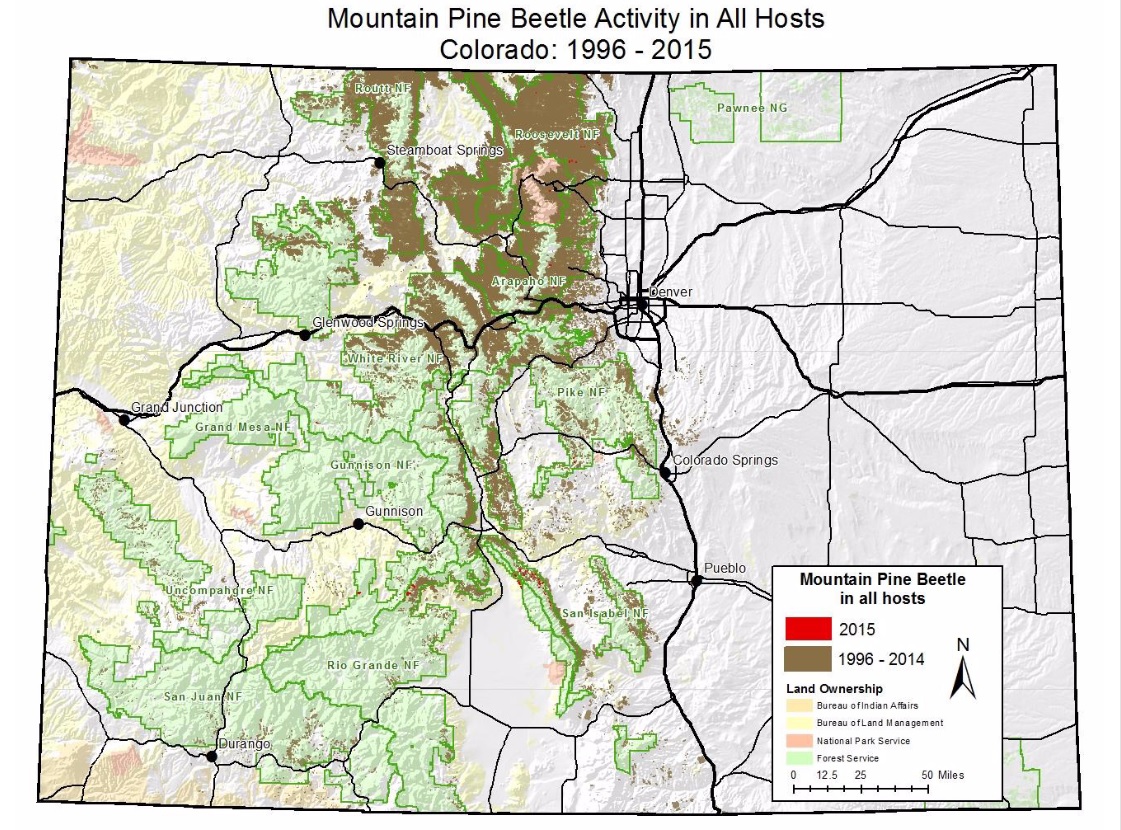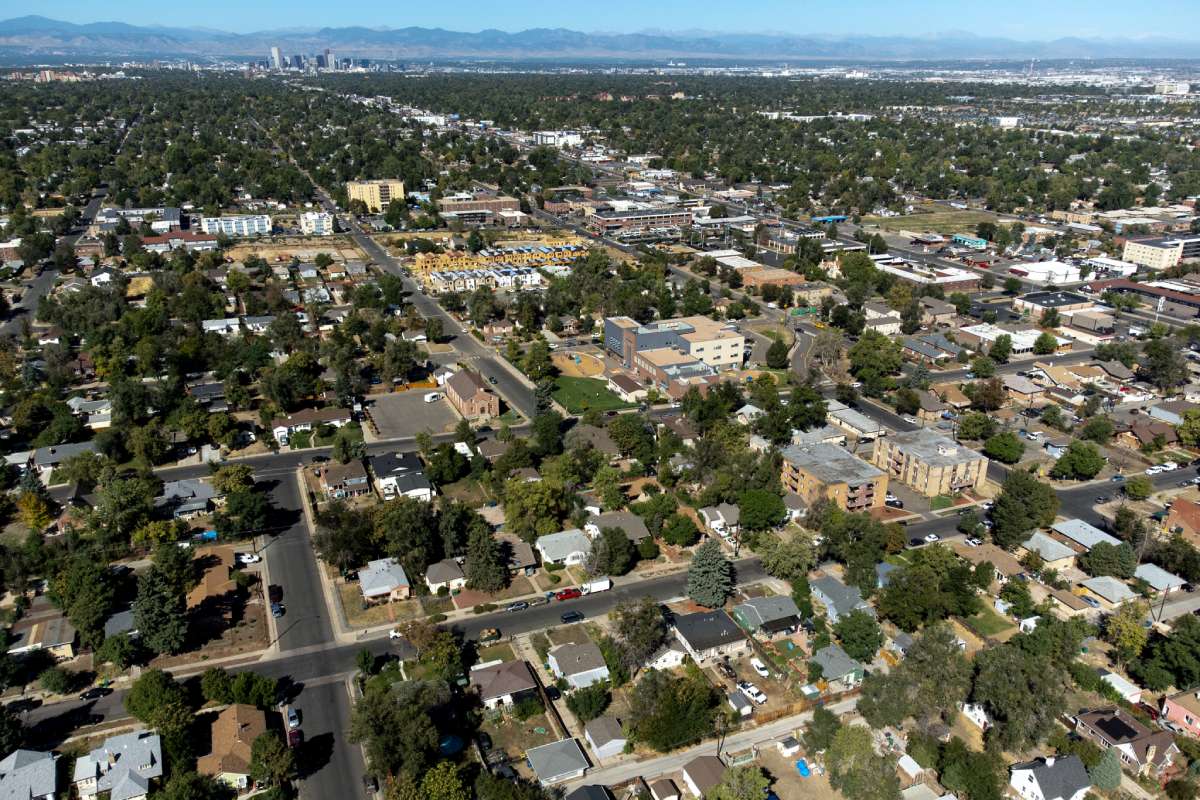
The 36,724 acre Beaver Creek fire in Northern Colorado has been burning for more than eight weeks. Firefighters say it's so different it has forced them to rethink the way they've approached wildfire suppression for 100 years. The reason? The fire is burning through a forest floor covered with trees killed by spruce beetles.
The U.S. Forest Service reports that since 1996, beetle outbreaks have impacted roughly 4.3 million acres of forest in Colorado and Wyoming. The stands of dead trees can be seen around many parts of the state. And that creates a unique environment for fighting wildfires.

Curtis Heaton is director of safety, fire and aviation management with the U.S. Forest Service. He says many of the beetle-killed trees in the Beaver Creek fire have been dead for years and have fallen onto the forest floor. This creates almost a jungle-gym for firefighters, making fighting the fire on the ground very difficult -- and unsafe. Strong winds and even the motion of helicopter rotors have toppled standing beetle-kill timber.
Heaton says the work to clear the fallen trees, some very thick in diameter, is labor intensive even with chainsaws and heavy machinery.
Fighting the blaze from the air has also been difficult. Heaton says with large amount of dead timber covering the forest floor, retardant and water just fall on top of the logs. Because those are stacked crisscrossed on top of each other, the ground fire underneath continues to burn.
An incident management report from the Beaver Creek fire states:
Throughout the length of this fire, fire managers have learned to engage the fire using suppression actions where they would have the highest probability of success, such as direct attack in lighter fuels and point protection around structures. However, patience and taking time are not traditional suppression practices. The Beaver Creek Fire has presented a new firefighting environment and shown that on some landscapes, old strategies and tactics won’t work. Nor do current modeling programs that project fire spread. To be successful, crews have had to adapt to this fire and use it as a learning experience for the future of fire suppression in beetle-killed forests.
To date the Beaver Creek Fire has threatened 131 structures; 17 have been lost including one home. There have been no deaths but six people have been injured. The fire remains 44 percent contained.
Heaton says residents and backcountry campers can check here to see the last information on fires burning in Colorado, as well as current restrictions and bans.
Heaton spoke with Colorado Matters host Nathan Heffel.









